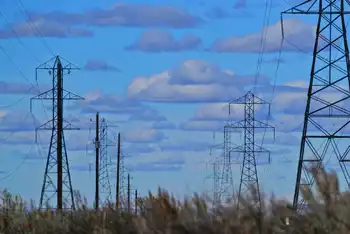New hybrid technologies boost efficiency
In the continual search to squeeze every last little erg of energy from its hybrid systems, Toyota has been continually tweaking the systems used in the Prius and using this knowledge in other Toyota and Lexus models. The culmination of these new developments can be found in the third-generation 2010 Prius.
These new systems are aimed at reducing parasitic losses and increasing electric-only operation — resulting in lower fuel consumption and emissions. They also allow for faster cabin warm-up, increased precision of accessories and lower maintenance.
It all centres on the engine. Like the internal combustion engine in virtually every hybrid, regardless of manufacture, that in the Prius operates on what is known as the Atkinson cycle, named after James Atkinson who invented an alternative to the Otto cycle engine in 1882.
The power stoke in the Atkinson cycle engine is longer than the compression stroke, resulting in greater efficiency, i.e. mileage — but less power. The reduced power is a fair trade for improved mileage in a hybrid because the added torque from the electric motor more than makes up for it.
To further reduce the amount of fossil fuel required, Toyota has eliminated the accessory drive belts from the Prius engine. Normally the water and power steering pumps and the air conditioning compressor are turned/operated by a belt connected to the crankshaft. Obviously it takes power to turn these pumps and fuel has to be used to produce that power.
Toyota, and several other companies, have replaced these conventional pumps with electrically driven units, thus eliminating the belts and their parasitic drag on the engine.
A side benefit is that an electrically driven water pump, instead of turning all the time because it is connected to the engine, can be turned on and off as required. For example, in cold-start conditions there is no need to circulate cold fluid. By waiting for the fluid within the engine to become heated before engaging the pump, warm-ups are faster - both for the engine and the passenger compartment.
By regulating exhaust gas recirculation and taking advantage of the lower exhaust temperature inherent in the Atkinson cycle engine, Toyota engineers have been able to reduce the need to richen the mixture during high-load conditions, such as climbing grades, passing or during sustained high-speed driving.
The "cooled EGR" system allows precisely controlled amounts of spent exhaust gases to enter the intake stream, lowering exhaust gas temperatures from about 880 degrees Celsius to 150 degrees, improving volumetric efficiency.
But there is a time when hot exhaust gases are a distinct benefit to hybrids — during cold weather.
The vast majority of the reduced fuel consumption and exhaust emissions result from shutting the engine off while the vehicle is stationary. This occurs most often in city or heavy traffic conditions, which is why hybrids are most effective in those settings. They are programmed to shut down once the vehicle has been at rest for a second or two and restart instantly when the driver's foot is taken of the brake pedal.
But in cold winter weather, engine heat is required to keep the passenger cabin at a comfy temperature. The cold also means greater demand on the electric motor during restarts, especially until the engine is warm. At very cold temps, the batteries so essential to hybrid operation also become less efficient. So Toyota engineers developed a system that uses exhaust heat to raise coolant temperatures more quickly.
Exhaust heat is captured just downstream from the catalytic converter where it is hottest. A control valve forces this hot air stream to circulate in a closed chamber, heating coolant in a surrounding container. Once the engine gets up to proper operating temperature, a valve closes and the exhaust stream bypasses the recovery system and continues out the pipe in the normal manner.
This system allows the use of the engine stop feature more quickly on cold days — improving mileage on those short hauls to work.
Individually, these approaches make only incremental improvements. Collectively, they make a big difference.
Related News

Ontario Energy Board prohibiting electricity shutoffs during latest stay-at-home order
TORONTO - With Ontario now into the third province-wide lockdown, the Ontario Energy Board (OEB) has promised residents won't have to worry about their power being shut off.
On April 8, the Province issued the third stay-at-home order in the last 13 months which is scheduled to last for 28 days until at least May 6.
On April 30, the annual winter disconnection ban is set to expire, meaning electricity distributors would normally be permitted to issue disconnection notices for non-payment as early as 14 days before the end of the ban.
However, the OEB has announced it is prohibiting electricity distributors from…





